List of the Best Assistive Devices for the Blind
In the dynamic realm of technology, innovations are continually reshaping the way we live. Assistive devices for blind offer individuals with visual impairments newfound independence and access to the digital landscape. From smart canes and refreshing Braille displays to cutting-edge speech-to-text software, this article delves into the transformative world of technology for the visually impaired. We will explore how these advancements are not only breaking barriers but also fostering a more inclusive and connected future for the blind community. Join us on a journey through the latest visually impaired technology that is revolutionizing the lives of those with visual impairments, paving the way for a more accessible and equitable world.
What is assistive technology for low vision?
The Technology Related Assistance to Individuals with Disabilities Act of 1988 offers a comprehensive definition of assistive technology devices, describing them as “any item, piece of equipment, or product system, whether acquired commercially off the shelf, modified, or customized, that is used to increase, maintain, or improve functional capabilities of individuals with disabilities.”
Assistive devices for the blind encompass a broad spectrum, ranging from “low tech” to “high tech.” “Low tech” devices may include traditional tools such as canes and lever door knobs, which offer tangible support for individuals with disabilities in their daily activities. On the other end of the spectrum, “high tech” solutions incorporate advanced technologies like voice recognition software and augmentative communication devices (speech-generating devices), showcasing the cutting-edge capabilities of modern assistive technologies.
Assistive technology for visually impaired individuals has evolved significantly, offering innovative solutions to enhance their daily lives. These visual impairment technologies play a pivotal role in fostering inclusivity, independence, and accessibility for individuals with disabilities. From basic tools that provide physical support to sophisticated software that enhances communication, blind people technology continues to evolve, offering tailored solutions to meet the diverse needs of users with disabilities. The ever-expanding landscape of assistive technologies reflects ongoing advancements, providing individuals with disabilities the means to actively engage with the world and overcome various challenges.
Best devices for visually impaired
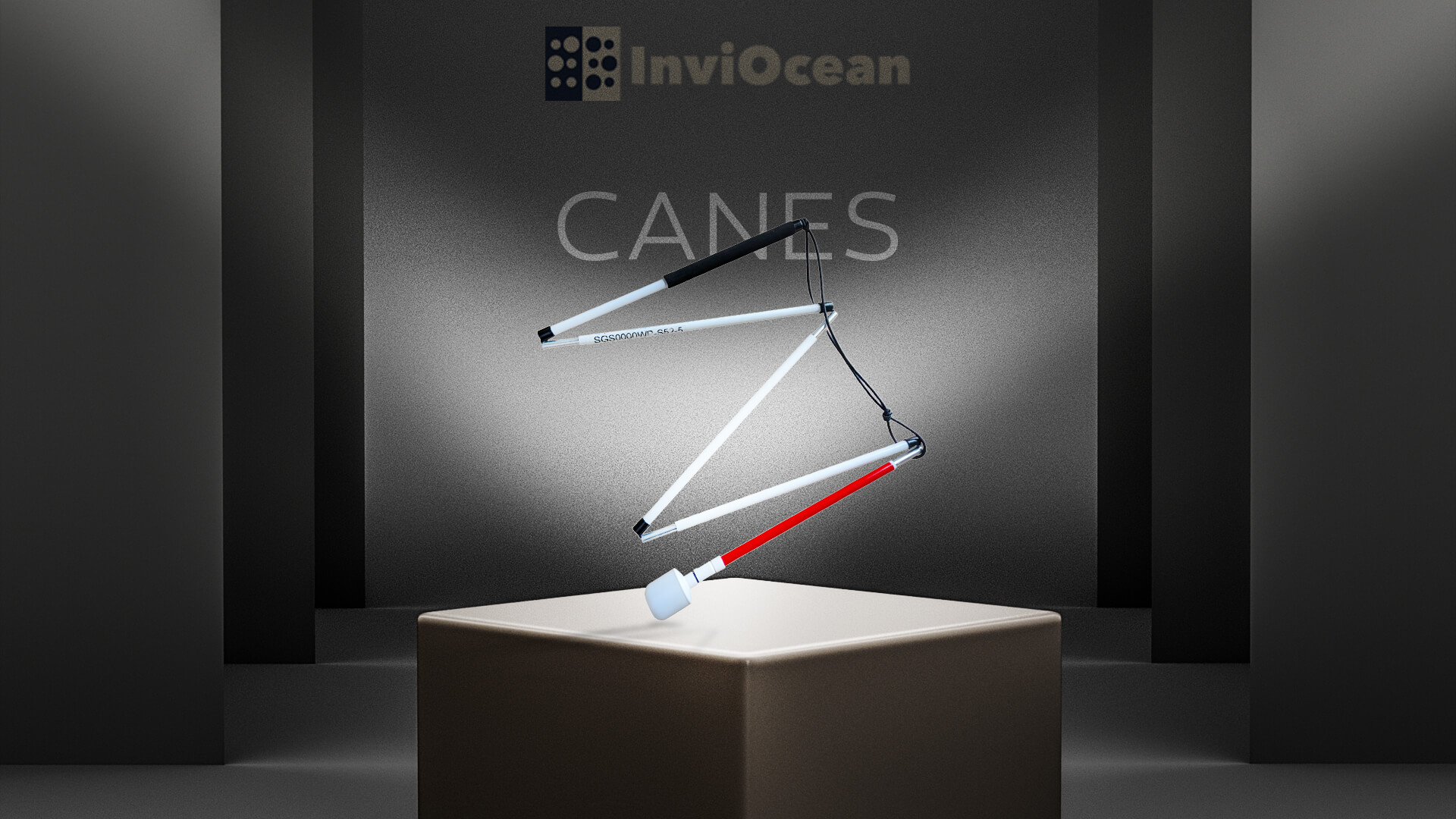
Canes
Mobility canes, commonly known as white canes, serve diverse functions to assist individuals in detecting obstacles, maintaining balance, and gauging step heights and drops. These cost-effective and user-friendly tools require only a few hours of training for proficiency. Check out our blog on colored canes for the blind to learn more.
On the other hand, a support cane shares similarities with a walking stick, offering balance assistance and physical support. Alternatively, a small low vision badge can be affixed to clothing, clearly communicating to others that the wearer has low vision.
Smart canes, equipped with sensors and technological capabilities, enhance the safety of individuals with visual impairments during city navigation. These tools for visually impaired not only recognize and alert users to obstacles but also seamlessly integrate with smartphones. This integration opens up a realm of possibilities, from voice-assisted GPS navigation to real-time descriptions of surrounding places and objects.
For instance, a person using a smart cane can pre-set a destination before leaving home and receive voice-guided directions during their walk. Along the journey, the cane can provide notifications, such as passing by a favorite Starbucks or approaching the desired bus stop. This technology empowers individuals with visual impairments, providing not just physical support but also a more informed and interactive experience as they navigate their surroundings.
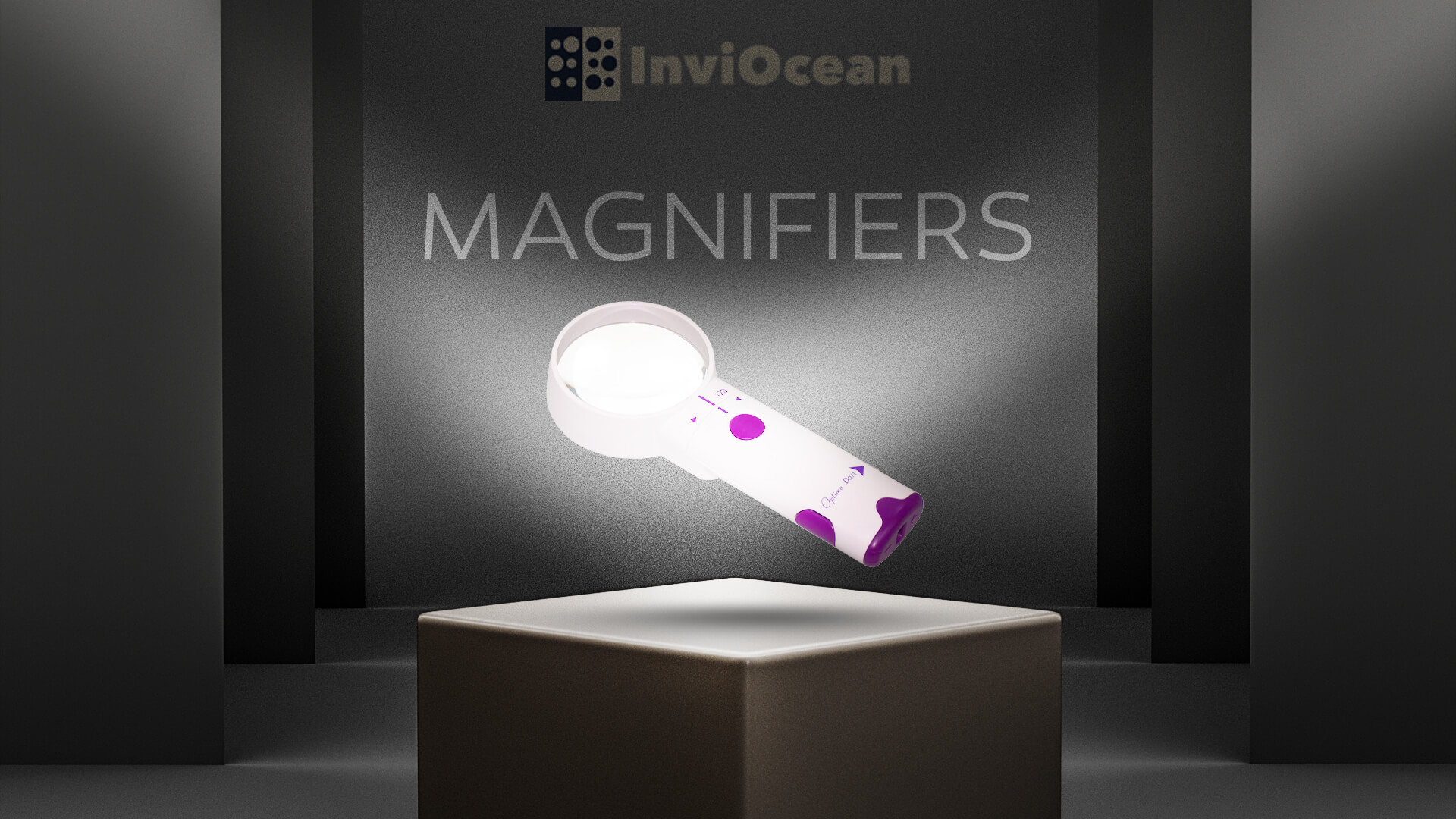
Magnifiers
Video magnifiers, also known as CCTVs, employ a camera and screen to electronically magnify objects. This low vision assistive technology primarily helps in reading and writing but is versatile enough for various tasks requiring magnification. Available in different forms, these devices cater to diverse needs, including models compatible with computer monitors, portable options, and units designed for focusing on distant objects like signs and notice boards.
The spectrum of magnifiers ranges from traditional handheld glass magnifiers to electronic versions with adjustable zoom capabilities at the push of a button. Some even function like overhead projectors, assisting individuals in reading newspapers or other printed materials.
Beyond dedicated devices, free options like the Zoom app on an iPhone utilize the smartphone’s camera to achieve a 1500% magnification, providing an accessible solution.
Magnifiers, whether handheld or electronic, prove invaluable for those routinely examining small details or reading brief text passages. With a variety of shapes, sizes, and magnification powers, these assistive devices for visually impaired offer flexibility to meet individual preferences. Some magnifiers are compact enough to fit in the hand, while others come with stands for added support.
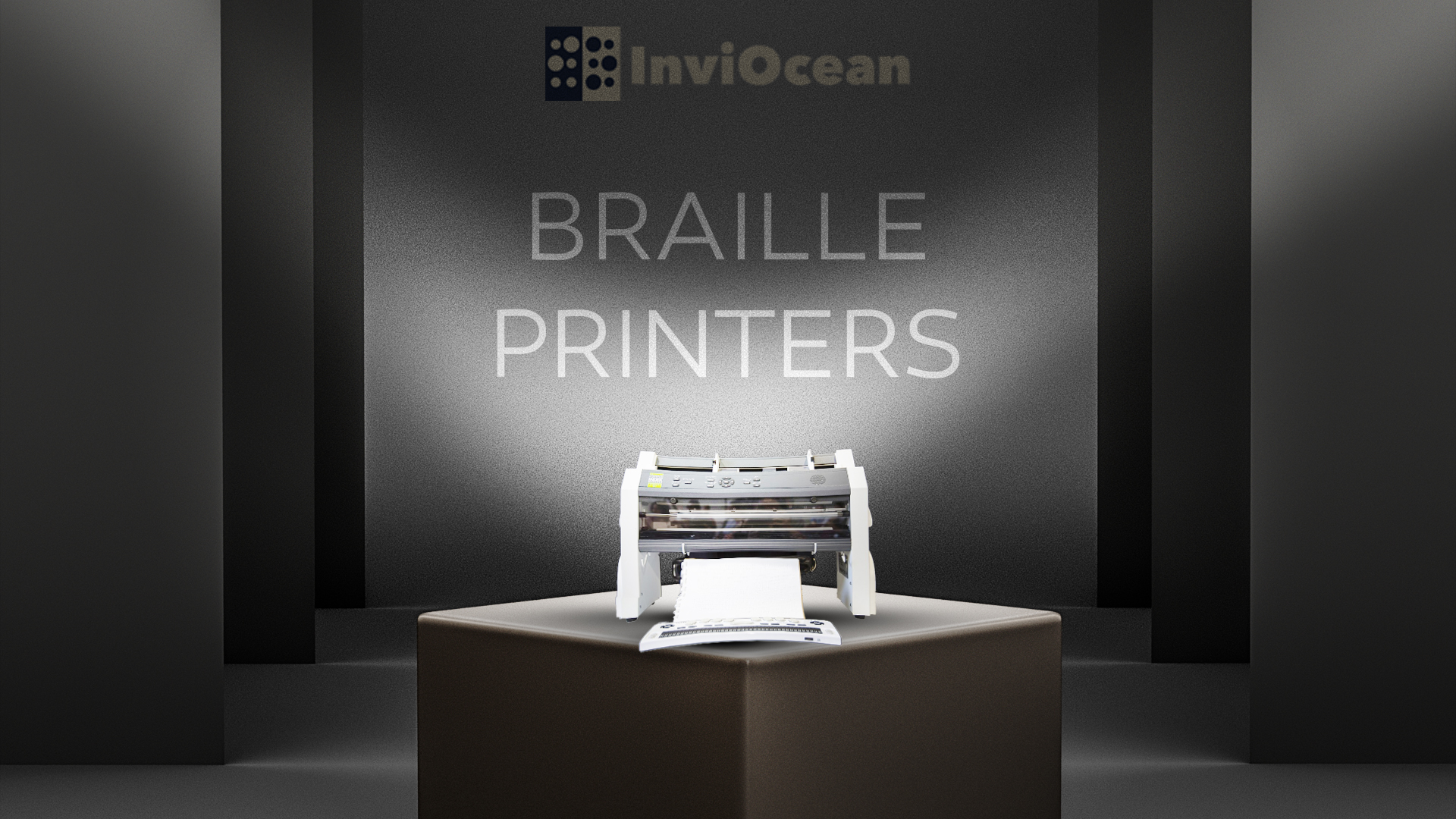
Braille printers
Braille printers receive data from computer devices and utilize solenoids to control embossing pins, imprinting braille information onto paper. Typically, these printers use heavyweight paper, resulting in more pages required for the same amount of information compared to regular printers. They are also slower and generate more noise. Interpoint printers, a subtype of braille printers, emboss braille on both sides of a page. The cost of a braille printer is directly linked to its braille output volume, with small-volume models ranging from $1,800 to $5,000, while large-volume ones may cost between $10,000 and $80,000.
The process of imprinting embossed tactile fonts involves simultaneous paper perforation at multiple points, contributing to a certain level of noise. As a result, using these printers necessitates incorporating sound isolation elements in their surroundings. However, contemporary visually impaired devices, despite their high costs and substantial dimensions, are relatively compact and can operate without such requirements. Recognized as professional tools for the blind, braille printers play a crucial role in tactile publishing activities. They find primary application in specialized libraries for the visually impaired, inclusive information-focused universities, corrective education institutions, and other specialized facilities.
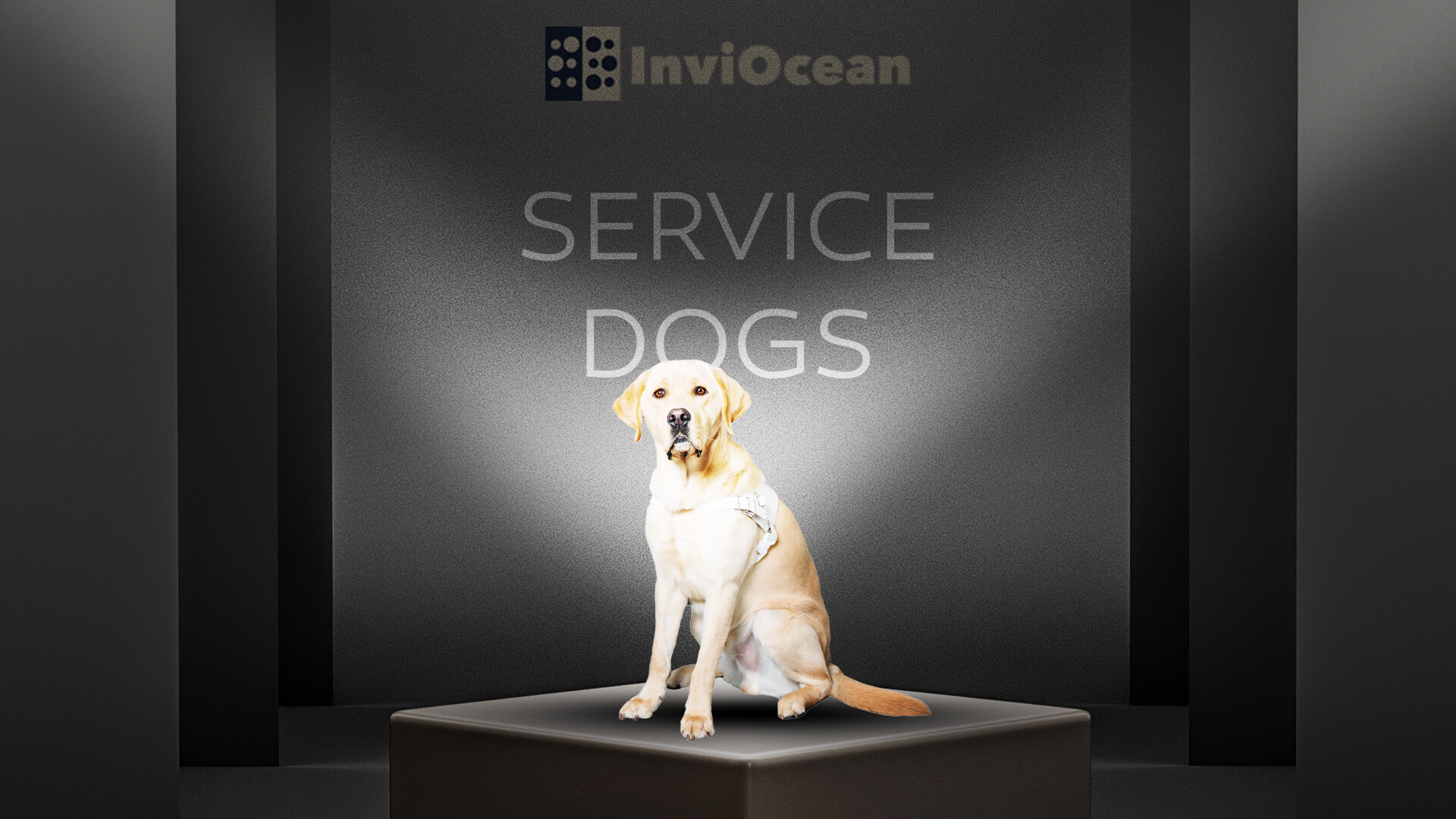
Service Dogs
Service dogs are highly trained companions specifically trained to assist individuals with various disabilities, offering a remarkable range of support. Whether retrieving items, guiding those with visual impairments, reminding owners to take medication, or aiding individuals with balance issues, these canine partners become an indispensable part of daily life.
One notable example is the visually guided assistance provided by certain breeds like golden retrievers, equipped with a service dog vest. These remarkable animals undergo extensive training to ensure they can adeptly navigate and assist their owners in various environments.
Service dogs not only serve as dedicated aides but also provide a newfound sense of freedom for their owners. These dogs accompany their handlers to public places, breaking barriers by accessing locations typically off-limits to regular dogs, including airplanes and restaurants. This access allows individuals with disabilities to lead more independent and fulfilling lives with their loyal canine companions by their side.
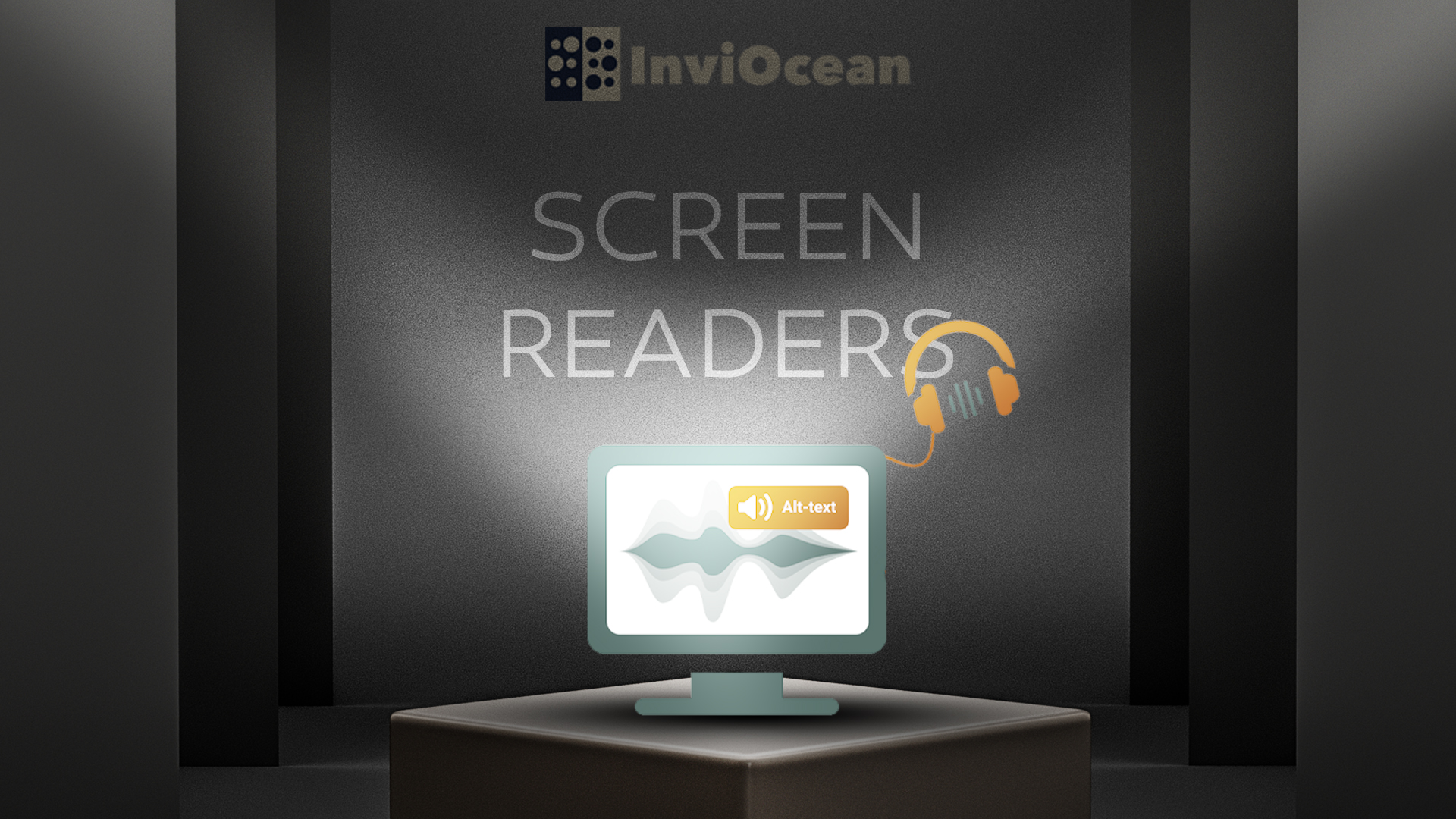
Screen Readers
A screen reader is a vital tool empowering individuals who are blind or have low vision to navigate and utilize their computers or devices effectively. This assistive technology employs a synthetic, robotic voice to audibly convey text and on-screen elements.
Pre-installed on smartphones, such as VoiceOver on iPhones and TalkBack on Android devices, screen reader software is also available for download on computers either for free or at a cost. Popular choices include JAWS for PC users and NVDA as a free alternative. Additionally, screen-reading software is integrated into Mac computers through VoiceOver and available as an add-on for PCs running Linux or Windows.
This technology for the visually impaired utilizes synthetic speech to read aloud the content displayed on a computer screen, ensuring compatibility with various programs and features across different operating systems. Examples of screen readers encompass JAWS and WindowEyes for PCs, VoiceOver for Mac, and Orca for specific Linux distributions.
Screen readers act as the interface connecting a user, the computer’s operating system, and its applications. Users interact through keyboard commands or braille displays, instructing the speech synthesizer to vocalize specific content or respond to changes on the screen. Advanced functions, such as locating text by color, reading designated screen portions on demand, and identifying active menu choices, enhance the user experience.
Optical Character Recognition System
Optical character recognition (OCR) systems empower individuals who are blind or visually impaired by scanning printed text and converting it into synthetic speech or saving it as a computer file. The OCR process involves scanning, recognition, and reading text. Initially, a camera scans the printed document, and OCR software recognizes characters, correcting errors and applying spell-checking techniques. The synthesizer then speaks the recognized text, which is stored electronically. These files can be converted into formats compatible with word processors and other software. Users access the text through adaptive technology devices, such as screen magnifiers or devices providing speech or braille output.
Current OCR systems offer high accuracy and formatting capabilities at significantly reduced prices compared to a few years ago. Popular PC-based OCR systems cost around $1,000, excluding the personal computer and screen access equipment. Self-contained OCR systems or those bundled with a PC range from $3,500 to $5,500.
Refreshable Braille Displays
Devices for the blind, such as refreshable Braille displays and talking software, play a crucial role in providing access to digital information. A refreshable braille display (RBD) is a tactile electronic device that, when connected to a computer, smartphone, or tablet, presents text as braille. The device uses a flat surface to raise and lower small pins in various combinations, reflecting the words displayed on the connected device’s screen.
The RBD translates one line of text at a time into braille, allowing visually impaired users to read the continuously changing braille cells by moving their fingers across the display. The device is connected to another device, such as a computer or smartphone, and mirrors the content on its screen.
Types of refreshable braille displays:
- Stand-alone braille displays: These vary in the number of braille cells and may include a braille entry keyboard. Features may also include cursor routing buttons and navigation keys.
- Notetakers: These braille displays offer notetaking and file storage capabilities, enhancing their functionality beyond displaying braille.
- Smart display devices: These braille displays may have additional smart features, providing a versatile and integrated experience for users.
Braille displays provide direct access to information on a computer screen, allowing users to check format, spacing, and spelling. They are quiet and offer advantages over synthetic speech. The cost of braille displays ranges from $3,500 to $15,000, depending on the number of characters displayed. Models with notetaking capabilities are available, and they come with 40, 70, or 80 characters, with the choice depending on specific job requirements.

Light
This section features specialized light bulbs and lamps designed to provide enhanced lighting for individuals with low vision, aiding in reading and other daily activities. It includes bulbs that mimic natural sunlight, illuminating entire rooms. If you’re seeking low vision aids, task lighting, or comprehensive home illumination, explore the following lighting options.
Consider the following types of lighting, tailored for people with low vision
- Fluorescent or Compact Fluorescent Bulbs:
- Energy-efficient and bright.
- Dimmer switches can adjust intensity.
- Suitable for entire rooms.
- Cost-effective alternative to tube lighting.
- LED Lighting:
- Light-emitting diodes burn energy differently, lasting longer.
- Cooler color spectrum, bright, and ideal for close-up tasks.
- Suitable for reading, sewing, and crafting.
- Caution: Avoid lighting entire rooms, as intensity may bother eyes.
- Incandescent Bulbs with Bluer Color Temperatures:
- Old-fashioned type with wires inside.
- Try those with cooler color temperatures.
- Caution: Shadows, glares, and dark spots may persist.
Lighting to Avoid
- Full-Spectrum Lighting:
- Creates glares and contains excessive blue light.
- Halogen Bulbs Emitting Heat:
- Bright with contrast but may cause discomfort.
- Incandescent Bulbs with Warmer Color Temperature:
- Creates shadows and uneven, warm light.
- Not conducive to focusing or reading with low vision.
Individuals with low vision should experiment to find the most suitable lighting. Keep in mind that the distance from the light source impacts brightness. Consider using fluorescent bulbs for overall room lighting and a small LED task light for specific tasks. Consult your doctor or ophthalmologist for personalized advice on lighting for low vision.
GPS
GPS navigation, also known as satnav or satellite navigation, involves utilizing tools, commonly found on smartphones, tablets, or specialized devices, to assist in route planning and travel. Originally known as the global positioning system (GPS), this technology has been a longstanding aid. With the integration of accessibility features in smartphones, it has become a crucial assistive tool for individuals with visual impairments, empowering them to independently plan and navigate routes.
GPS navigation plays a crucial role in guiding individuals with sight loss to their desired destinations. GPS software, tailored for the blind or visually impaired, operates across various devices, providing directions through speech, text, or braille. Beyond basic navigation, these vision assistive technology may include details on points of interest, altitude, speed, and precise GPS coordinates.
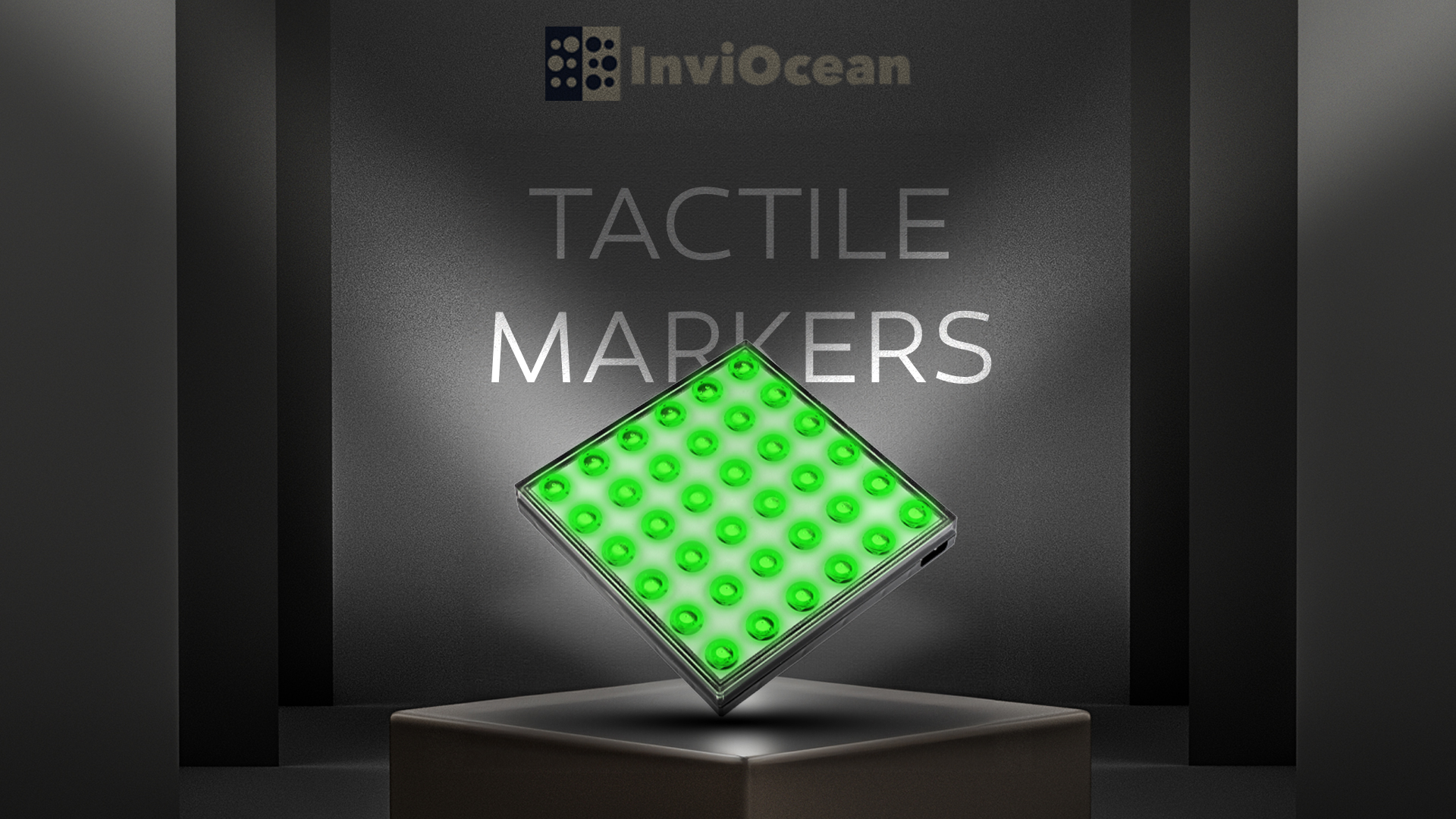
Tactile markers
Tactile markers and basic stickers are valuable tools for individuals with vision conditions, assisting them in identifying essential settings on household appliances like microwaves, ovens, and dishwashers. This equipment for the blind creates a tactile indicator on common buttons, allowing users to feel for bumps and orient themselves effectively.
To enhance the effectiveness of these tactile markers, health professionals often recommend referring patients to occupational therapists. Occupational therapists possess expertise in assessing individuals’ abilities to navigate their living spaces and can provide valuable insights into suitable equipment and support mechanisms. This collaborative approach ensures that individuals with vision conditions receive personalized guidance to make various rooms in their homes accessible and functional.
In conclusion, assistive technology for the blind represents a transformative force, empowering individuals with visual impairments to navigate the world independently. From tactile tools to cutting-edge AI solutions, these innovations foster inclusivity and contribute to a more accessible future. Ongoing collaboration and innovation will further refine these tools for the visually impaired, promising a world where everyone, regardless of visual ability, can flourish. The narrative of assistive technologies is not just about gadgets; it’s a story of empowerment and a commitment to a more inclusive tomorrow.
Individuals experiencing sight loss can utilize scanning devices equipped with Optical Character Recognition (OCR) technology for blind people to convert printed materials into electronic text, enabling synthetic speech technology to read it aloud.
Assistive technology solutions come in various forms, ranging from store-bought options like speech recognition software to modified tools such as attaching tennis balls to a walker for smoother movement over carpets. Custom-made solutions, like crafting a prosthetic hand using a 3D printer, also fall under the category of assistive technology.
AI smart glasses are wearable eyewear devices specifically created to aid individuals with visual impairments. Incorporating artificial intelligence (AI), machine learning (ML), and augmented reality (AR) technologies, these glasses offer valuable support to enhance the daily lives of those with visual challenges.
